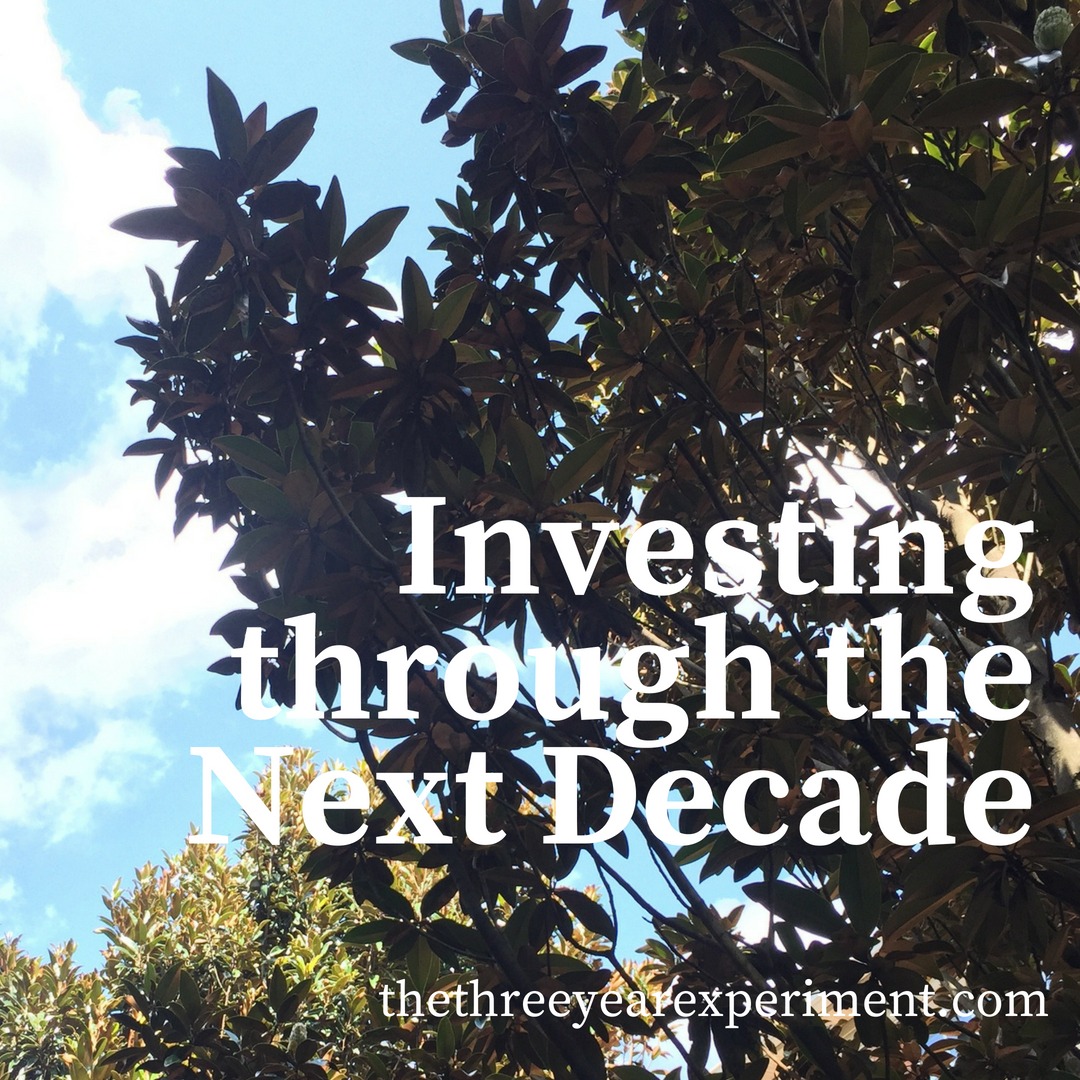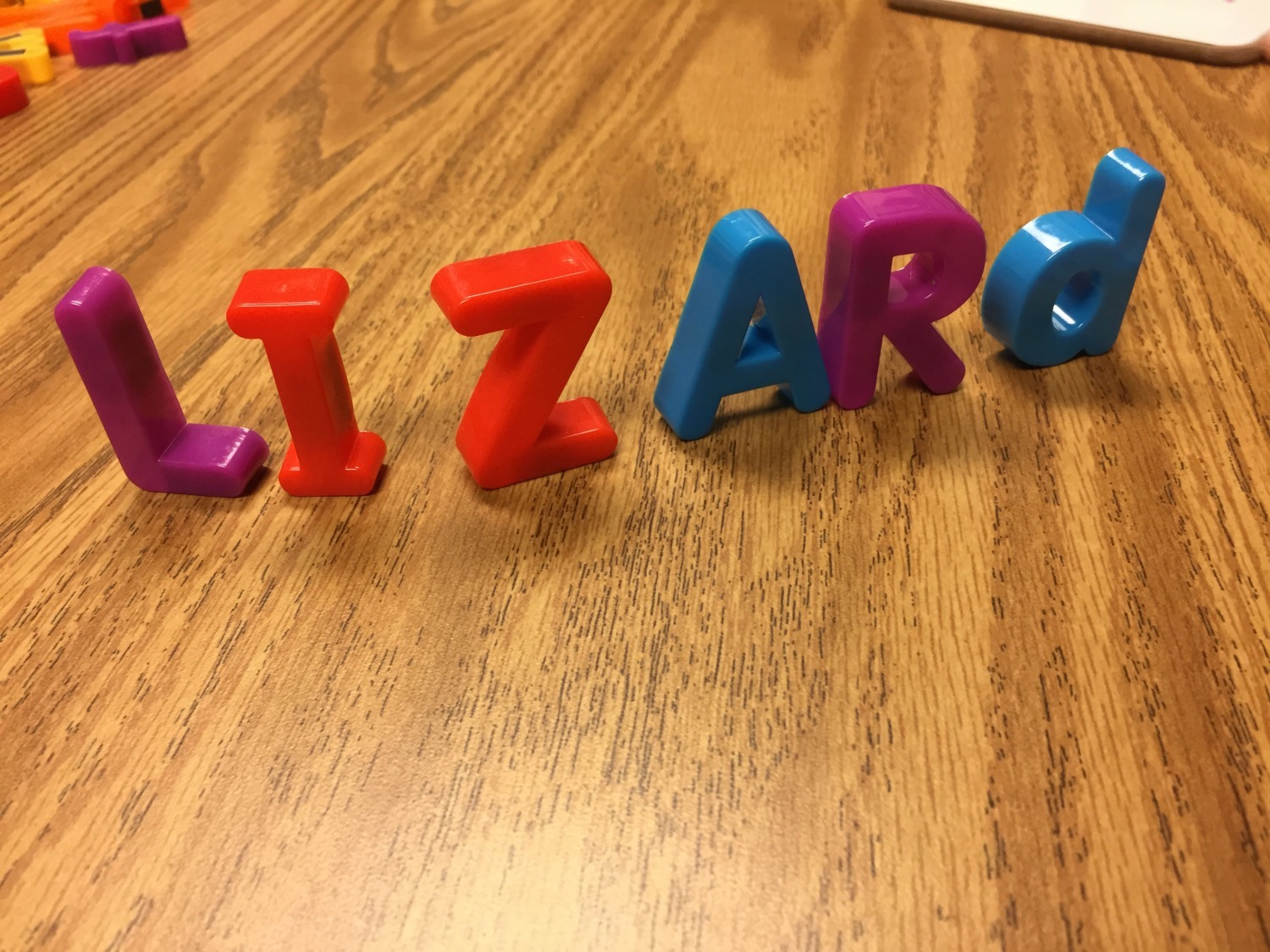This post contains affiliate links. Please see my full disclosure for more information. Thanks for supporting the blog!
Vanguard recently published a forecast with projections for returns for domestic and international stocks and bonds over the next decade.
“The chances of a recession by the end of 2020 are mounting. And the prospects for the American stock market in the next decade have worsened appreciably,” writes Jeff Sommer in the New York Times. That’s a fun paragraph to read.
Vanguard would never make predictions about actual returns, but suggests it’s highly likely the US will have a recession by the end of the decade.
More interestingly, in my opinion, are the projections for securities.
Vanguard projects that US (domestic) stocks will return 3.9 percent annualized over the next ten years.

They predict that international stocks, though, will return 6.5 percent.
And US bonds? 3.3 percent.
From 1985 to 2014, US domestic stocks returned over 12%.
I’ll admit, when I read that domestic stocks are projected by Vanguard to return just 3.9 percent over the next decade, I momentary worried. Our family has enjoyed the fruits of strong domestic stock returns for many a year. While we don’t hold all of our investments in domestic stocks, they do make up a large proportion.
If stocks only return 3.9% for the next decade, that will mean we’ll need to invest more than ever to hit our retirement goals.
But here’s the kicker: over the long run, you will get much better returns if your investing portfolio is primarily stocks, rather than bonds (since 1929, stocks have had something like a 10% annualized return while bonds have had a roughly 5% return). So if we don’t want to retire in the next ten years or so, then it would make sense to stay the course with securities. Because when the market eventually starts to rise again, we will want to own a bunch of stocks.
However, in the meantime, we have to be prepared to ride out big dips in the stock market.
What if we want to retire in the next five years? Would it make sense to diversify the portfolio a bit more?
The Shorter Term Plan
Long ago, I read Millionaire Teacher by Andrew Hallam. It’s one of the few books I actually own on Kindle, which is helpful, because after reading this article, I went back to reread Andrew’s advise about a balanced portfolio.
The thing that’s always appealed to me about Hallam is the simplicity of his advice. While nothing beats the simplicity of Warren Buffet’s 100% VFIAX (Vanguard’s S&P 500 Admiral Shares Index), if you’re trying to retire in the next decade, then it might be prudent to look at some other investment strategies that even out the big bumps in the stock market. Especially if you’re prone to panic.

The Three-Pronged Approach
Hallam suggests a three-part portfolio that consists of three Vanguard index funds (he suggests other funds for other parts of the world):
- Vanguard US Bond Index (35%)
- Vanguard Total US Stock Market Index (35%)
- Vanguard Total International Stock Market Index (30%)
The funds have different ticker symbols depending on if you buy admiral or regular shares (you have to invest at least $10,000 per account to qualify for Admiral shares, but they have lower fees than regular shares).
Then you simply rebalance your portfolio once per year. If stocks did very well in 2018, and your portfolio now contains 40% domestic stock, then you’d sell a few shares of the US index and buy bonds, until your proportions were again at the right levels.
Many people will scoff at the idea of holding 35% of your investments in bonds. Over the long run, the expected return on bonds is usually about half of stocks. But oftentimes, if you hold a certain percentage of your portfolio in bonds, you will even out the wild ride of the stock market without sacrificing very much in the way of returns.
For example, if, in the next decade, the US has a recession, and your stock positions lose 30% of their value, you’d need to keep a cool head and resist the urge to sell them at the bottom of the market, perhaps for years (after the last crash, it took 3 years for stocks to regain their pre-recession values).
If you’re planning to retire in the next five years, it might be prudent to consider selling some of your domestic securities and bolstering your bond position, so that you’d have more stable returns during the first few years of retirement.
Disclaimer: I’m not a retirement expert, and this is not investing advice–I’m just providing this information for entertainment purposes. But if anything you’ve read makes you stop and think, then I encourage you to do some more research. This bull market won’t last forever and you want to be prepared, both with your physical investments and your mental plan, so that you don’t panic if there is a crash.
Our Positions
So what have we done? Previously, 85% of our portfolio (excluding real estate) was in domestic stocks. Only 6.5% was in bonds and 8.5% in international stocks. While we’re not likely to increase our holdings in bonds and international stocks to one third each of our portfolio, we will undoubtedly consider rebalancing for diversification. That way, we give ourselves more options when it comes to the timeline of our retirement. Yes, we might sacrifice returns, but we give ourselves more flexibility.
The Future
No one can predict the future, but we also have to realize that it’s not likely to look like our immediate past. I think it makes much more sense to think about different financial scenarios, and run the numbers using various return sequences, in order to give yourself a more realistic picture of what could possibly happen with your investments over the next decade, than to bury your head in the sand and pretend the market will continue to rise indefinitely.
I still believe the best thing you can do to prepare yourself for your own personal financial future is to pay off debt and start investing, no matter where, in order to give yourself the right financial footing to meet the future, whatever it looks like.
What do you think? Do you invest in bonds at all? How about international stock?



I think Vanguard, which is a company I love and have a large part of my portfolio with, knows no more about what will happen in the next decade with stocks than a monkey throwing darts at a board. Market timing is risky business. That said I stay about half stocks and half bonds and cash because I’m already slightly early retired and do not need an aggressive rate of return.
Completely agree about market timing. Personally have more faith in “the monkey”. That said, I do believe in not putting all of your eggs in one basket. I do have index accts: S&P 500, Bonds, Utilities and International stocks. Also have real estate which has been pared somewhat lately. Lastly, liquid assets in the form of cash.
We could probably put a bit more in our cash position, but it’s tempting to spend. 🙂 So for now we just have a couple of months of emergency fund. Mr. ThreeYear really wants to invest in some real estate but I’m skeptical of all the work it’ll entail. So we’ll see.
That’s interesting that you’re in half stocks and bonds, but I’m sure you’ve got a really safe and stable portfolio that way. I’m sure we’ll be much more conservative nearing retirement. I know that’s what many people say about real estate investing, that the cash flow tends to be more predictable and stable, and that’s nice to have in retirement. Of course no one can see into the future and market timing is a myth. However, I think people can also be willfully blind about market conditions (remember “Real estate values will go up forever!” circa 2006?) and it’s a good exercise to consider various possibilities and adjust your strategy according to what can protect you the most from the majority of scenarios. Because “Rule #1: Never lose money!”.
i think we’re about 16% international. i have preferred shares in place of bonds. i’m with steve on not putting much stock in projections. look at the dire predictions after the last election and where the market ended up so far.
Yep, you can never really listen to predictions because people don’t know what’s going to happen in the future. That being said, there are a lot of voices talking about lower returns in the next few years, so that’s prompted me to think about our strategy and come up with some plans based on various scenarios. For some reason our international position has never been that high even though we are a fairly “international” family, being from two continents and traveling so much and all.
Everyone goes by the 3 fund, including us. We have international stock – quite a bit – because emerging countries boom fast (and it’s obvi more risky.) We have less than 3% bonds but we’re looking to up our cash supply a little. I’m a little bit wary of the entire market right now (even more than 6 months ago.)
I’m always glad to hear that other smart FI people are using similar methods. Interesting that you have so little $$ in bonds but with such a high cash position that makes sense–I’m wary too. That’s a good word.